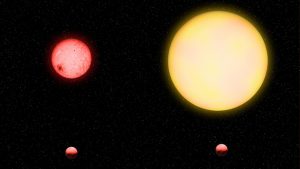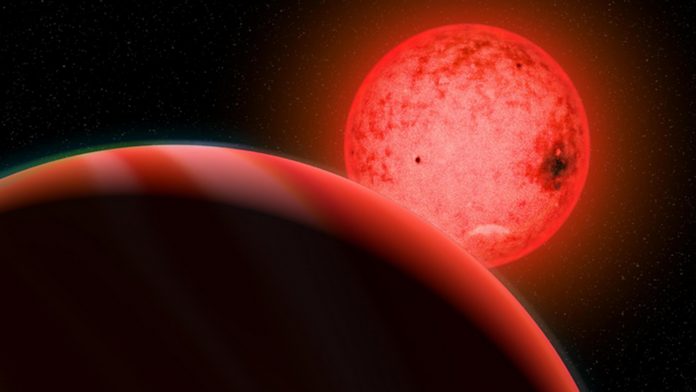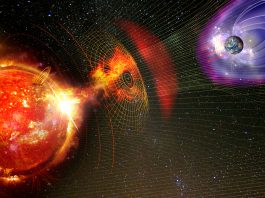Astronomers have challenged current theories about gas giant formations. An unusual planetary system was discovered, in which a large gas giant planet orbits a small red dwarf star called TOI-5205.
The discovery, led by a team at the Carnegie Institute for Science, challenges TOI-5205’s existence. Technically, it is a ‘forbidden’ planet because it should not exist under previous gas giant theories.
The study’s corresponding paper, ‘TOI-5205b: A Short-period Jovian Planet Transiting a Mid-M Dwarf,’ was published in The Astronomical Journal.
What are M dwarfs?
M dwarfs are smaller and cooler than the Sun and are the most common stars in our Milky Way. Because of their small size, they tend to be about half as hot as the Sun and much redder. They have very low luminosities but extremely long lifespans.
Although red dwarfs host more planets than other, bigger types of stars, their formation histories make them unlikely candidates to host gas giants.
A formation that has never been seen before
NASA’s Transiting Exoplanet Survey Satellite (TESS) first identified the newly discovered planet as a potential candidate. Kanodia’s team then confirmed its planetary nature and characterised it using a variety of ground-based instruments and facilities.
“The host star, TOI-5205, is just about four times the size of Jupiter, yet it has somehow managed to form a Jupiter-sized planet, which is quite surprising,” commented Shubham Kanodia, who specialises in studying these stars, which comprise nearly three-quarters of our galaxy yet cannot be seen with the naked eye.

A few gas giants have been discovered orbiting older M dwarf stars. But until now, no gas giant has been found in a planetary system around a low-mass M dwarf like TOI-5205. A Jupiter-like planet orbiting a Sun-like star could be compared to a pea going around a grapefruit for size comparison. Because the host star is so much smaller, it is more like a pea going around a lemon. When the Jupiter-mass TOI 5205b crosses in front of its host, it blocks around 7% of its light—one of the largest known exoplanet transits.
Comparing this discovery to common gas giant theories
Planets are born in the rotating gas and dust disk surrounding young stars. The most commonly used theory of gas giant formation requires about ten Earth masses of this rocky material to accumulate and form a massive rocky core, after which it rapidly sweeps up large amounts of gas from the neighbouring regions of the disk to form the giant planet that the researchers observed.
“TOI-5205b’s existence stretches what we know about the disks in which these planets are born,” Kanodia explained. “In the beginning, if there isn’t enough rocky material in the disk to form the initial core, then one cannot create a gas giant planet.
He continued: “At the end, if the disk evaporates away before the massive core is formed, then one cannot form a gas giant planet. And yet TOI-5205b formed despite these guardrails. Based on our current understanding of planet formation, TOI-5205b should not exist; it is a ‘forbidden’ planet.”
The team demonstrated that the planet’s considerable transit depth makes it highly conducive for future observations with the recently launched JWST, which could shed some light on its atmosphere and offer some additional clues about the mystery of its formation.









